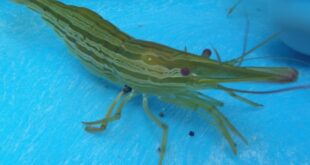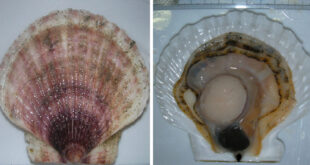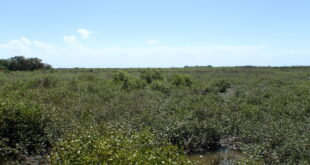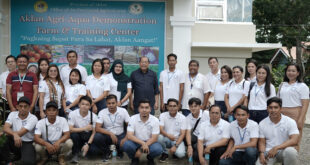By Development Communication Section

Two SEAFDEC/AQD scientists attended the “9th Symposium on Diseases in Asian Aquaculture (DAA9)” from 24 to 28 November 2014 held at Ho Chi Minh City, Viet Nam.
During the conference, Dr. Rolando Pakingking Jr talked about his study on the “Load and composition of the bacterial microbiota of tilapia (Oreochromis niloticus) cultured in earthen ponds in the Philippines.” He reported that a total of 20 bacterial genera and 31 species were identified, majority of which were gram-negative bacteria constituting 84% of the overall bacterial isolates examined. Dominant bacteria identified in the gills and intestine of tilapia were Aeromonas hydrophila, Bacillus spp., Plesiomonas shigelloides, Shewanella putrefaciens, Pseudomonas fluorescens, Staphylococcus spp., and Vibrio cholerae. These bacteria were also dominant in the pond sediment and rearing water, except S. putrefaciens and V. cholerae which are not present in the water samples examined. According to Dr. Pakingking, this only indicates that resident bacteria in the pond water and sediment typify the composition of bacterial microbiota in the gills and intestine of tilapia. He also added that this bacterial microbiota in the gills and intestine of tilapia may cause disease epizootics under stressful conditions.
Dr. Eleanor Tendencia on the other hand, presented two posters namely “Effect of different salinities (5, 20, 37 ppt) at low temperature (22°C) on WSSV infected shrimp” and “Two-month mortality syndrome and other problems encountered by shrimp farmers in the Philippines.”
Dr. Tendencia’s first poster shows the results of the study that there is no significant difference in shrimp mortality and viral load among the shrimps infected with white spot syndrome virus (WSSV) reared at different water salinities (5, 20, 37 ppt). Interestingly, for the control or the uninfected shrimp, WSSV was detected at 144 hours post infection but the source of infection was not determined. It was observed that control shrimp reared at 5 ppt have significantly higher viral load and mortality compared to those reared at 20 ppt and 37 ppt.
The second poster on the other hand focuses on the two-month mortality syndrome (TMMS) that is one of the major problems faced by shrimp farmers in the Philippines who are into extensive polyculture. It was called TMMS since the shrimp die before they reach 60 days of culture, some even as early as two weeks; and the mortality is up to 100%. Other problems faced by shrimp farmers such as protozoan infestation in the gills, the cooked-like appearance of live shrimps, and environmental problems like pollution were also showed in the poster. To avoid these problems, some of the preventive measures recommended are the proper implementation of the greenwater culture system and organic farming.
Prior to this conference, Dr. Pakingking also represented SEAFDEC/AQD at the 13th Asia Regional Advisory Group on Aquatic Animal Health on 22-23 November 2014, also held at Ho Chi Minh City, Viet Nam. The Advisory Group was established by the Governing Council of the Network of Aquaculture Centres in Asia-Pacific (NACA) to provide advice to NACA members in the Asia-Pacific region on aquatic animal health management. Dr. Pakingking was elected as the new Vice Chairperson of the Advisory Group.
 SEAFDEC/AQD Southeast Asian Fisheries Development Center | Aquaculture Department
SEAFDEC/AQD Southeast Asian Fisheries Development Center | Aquaculture Department



